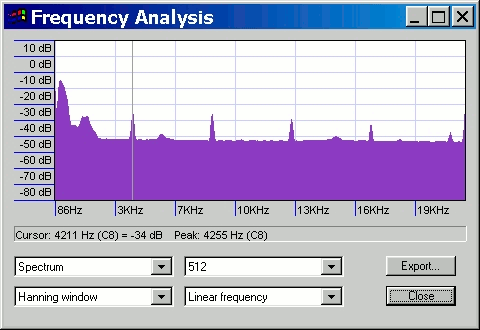For spikes like that you’ll be wantin a “notch filter”…

[/url] http://wiki.audacityteam.org/index.php?title=Noise_Removal#Notch_Filter
You can get a copy David Sky’s Notch filter plug-in here … https://forum.audacityteam.org/t/click-and-noise-removal-from-voice-speech-recording/10168/3